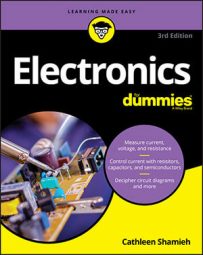If you hear the word "ground" used in an electronics context, be aware that ground can refer to either earth ground or common ground. Earth ground means pretty much what it says: It's a direct connection to the ground — real ground, the stuff of the planet.
The screw in the center of a standard two-prong AC outlet, as well as the third prong in a three-prong outlet, is connected to earth ground. Behind each wall socket is a wire that runs through your house or office and eventually connects to a metal post that makes good contact with the ground.
This arrangement provides extra protection for circuits that use large amounts of current; in the event of a short circuit or other hazardous condition, shipping dangerous current directly into the earth gives it a safe place to go. Such was the case when Ben Franklin's lightning rod provided a direct path for dangerous lightning to travel along on its way into the ground — instead of via a house or a person.
In circuits that handle large currents, some point in the circuit is usually connected to a pipe or other metal object that's connected to earth ground. If this connection is missing, the ground is said to be floating (or a floating ground) and the circuit may be dangerous. You'd be wise to stay away from such a circuit until it is safely grounded (or "earthed," as folks say in the UK)!
Common ground, or simply common, isn't a physical ground; rather, it's just a reference point in a circuit for voltage measurements. Certain types of circuits, particularly the circuits commonly used in computers, label the negative terminal of a DC power supply the common ground, and connect the positive terminal of another DC power supply to the same point. That way, the circuit is said to have both positive and negative power supplies. The two physical power supplies may be identical, but the way you connect them in a circuit and the point you choose for the zero voltage reference determine whether a supply voltage is positive or negative. It's all relative!

